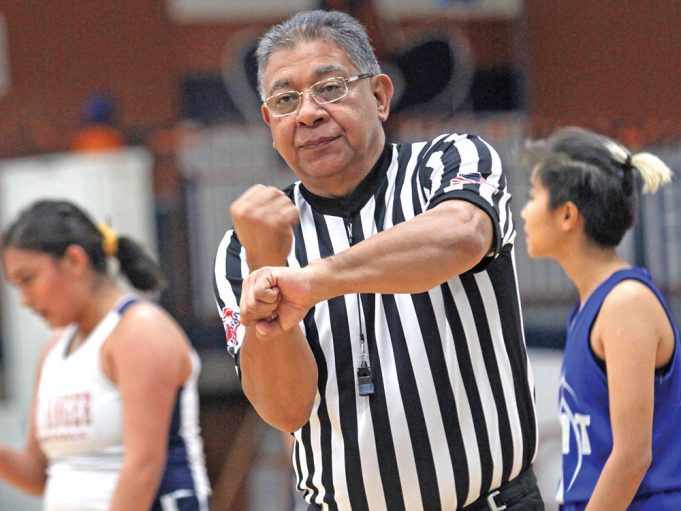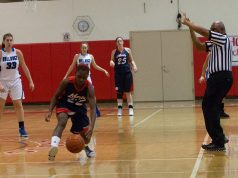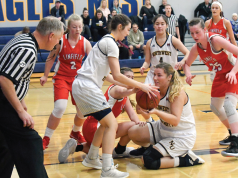Like it or not, we officials are on a stage of sorts, playing a role and contributing to the production. By that standard, we have something in common with real actors in how we ply our trade and involve the audience.
Many of us have some idea of how casting calls work for movie or TV parts. Candidates are competing for a role in a production and are given some portion of the script to read. Sometimes, they read the script “cold,” while other times they get it in advance and can work out how they wish to portray it. Either way, the producer is looking for the most compelling presentation of how he or she wants it to be viewed and selects the person best for the job, based on some expectations. Despite the fact everyone trying out has the same lines to read, each actor makes his or her own attempt to make it memorable and differentiate himself or herself from everyone else.
In basketball, officials are given the same script, too. This is text in the rule and mechanics books. The difference is they’re expected to play the role as indistinguishably as they can. In order to portray their impartiality, they’re expected to apply the rules and run the game the same as every other official as much as possible. There are tall and short, skinny and fat, male and female officials, of course, but beyond their physical traits, the game wants no inkling that they’re judging differently by behaving differently. A way of doing that would be by going “off the script.”
Officials who manipulate signals to their own personal style don’t create a following like actors; more often, they create suspicion: Does the official want to be noticed, apply the rules differently, need to justify his or her actions more, or not care that much? Any time a participant can look at an official and ask, “What’s the deal?” it defeats the homogeneity of the crew, causes division and ultimately reduces the upward mobility of the person wearing the striped uniform.
A unique aspect of the basketball rules is there are a limited number of violations and fouls, but many ways to commit each one. A player could travel by dribbling after raising a pivot foot, taking five steps on a layup, rolling over with the ball while on the floor — the list goes on. Nonetheless, there’s only one signal for traveling. Could you imagine officials acting out the individual traveling offense by throwing themselves on the floor, rolling over and standing up? Nope, everyone gets what traveling is.
Why, then, do so many officials impart their own versions of holding, pushing or illegal use of hands? For holding, some grasp the wrist below a clenched fist beside the shoulder like they’re supposed to. Others hold the fist in front of the chest or down at their waist. Similar imagination is applied to illegal use of hands where the chop is above the shoulder if the foul occurred on a shot attempt, but down near the thigh when committed on a dribble. Coaches, players and fans — other than the ones who officially never see a foul against their side — “get” the difference between a hold, a shove and a hack, without the official playing Charades for them out in front of the table. More importantly, if the official somehow implies the severity of the foul by the amplitude of the signal, paranoia sets in and the notion of playing eight people instead of five arises — even if the other two officials act like the output from a 3D printer of the signal chart. Consistency of signals portrays consistency of the crew using them.
Another aspect, less often considered, is that improvised signals can be confused with one another. When an official puts a hand on the wrist in front of the chest, was it a signal for “hold” or “hand check”? Was that palming or a backcourt violation? If, as a coach, I’m not sure what to coach my player about, I’m at a disadvantage. If I must follow up the indistinct signal with the genuine question, “What did she do?” I might come across as a whiner who questions every call; that doesn’t help me, either.
Clean, consistent, garden-variety signals are the great equalizer. When officials get together as a crew on occasion and vet out the commonality of their signals for a few minutes in the locker room before a game, they’re doing themselves a favor. They’re aiding communication, reducing confusion and evoking a greater impression of consistency. Then, when they blow the whistle and take that briefest of seconds to stop, compose themselves and deliberately make the signal, they buy a little bit of credibility. The officials who jog through their signals, don’t make eye contact and aren’t crisp about any of it make it harder on everyone, including themselves. Making a clear signal is your opportunity to rein in the game and tacitly communicate to everyone, “Take it easy; we’ve got this.”
You can make a career out of that image.
What's Your Call? Leave a Comment:
Note: This article is archival in nature. Rules, interpretations, mechanics, philosophies and other information may or may not be correct for the current year.
This article is the copyright of ©Referee Enterprises, Inc., and may not be republished in whole or in part online, in print or in any capacity without expressed written permission from Referee. The article is made available for educational use by individuals.


















